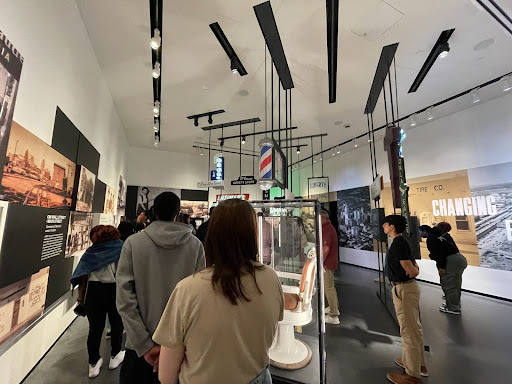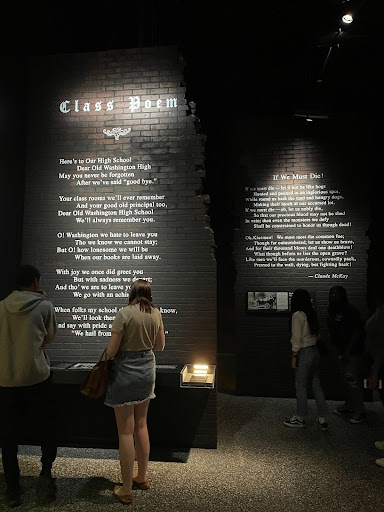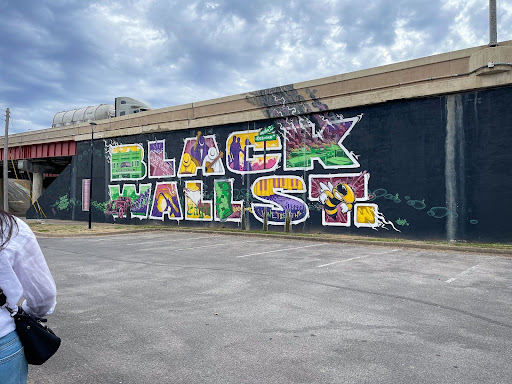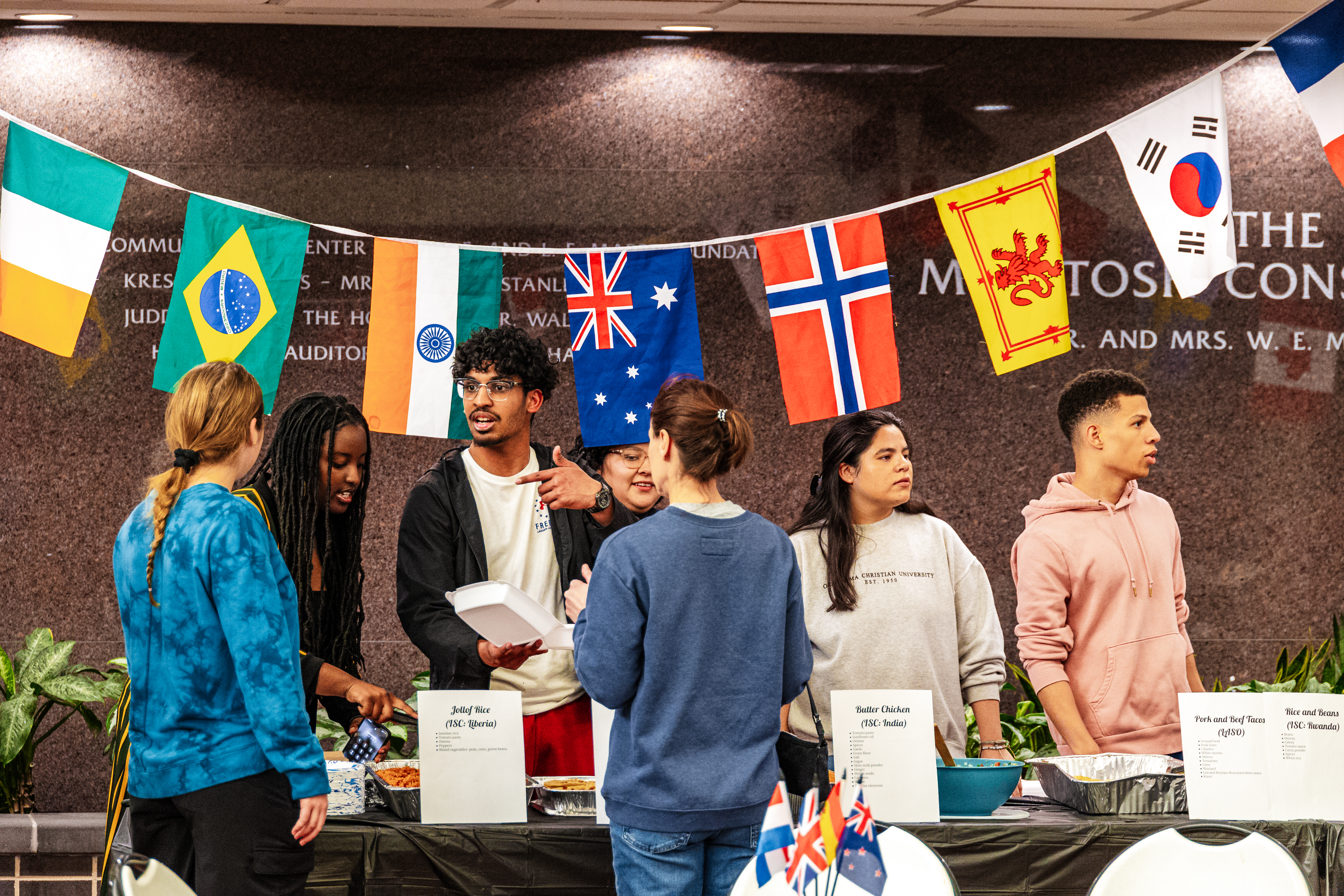
An attraction inside the Greenwood Rising museum features an interactive barbershop where visitors are able to sit and “have their hair down” as they listen to three black barbers talk about Greenwood and the effects of segregation on Tulsa.


On Feb. 27, several Oklahoma Christian students visited Greenwood Rising and Black Wall Street in Tulsa to learn the history of one of the worst racial attacks in Oklahoma.
After an hour and thirty-minute drive, the first stop on the agenda was the Greenwood Cultural Center. This center holds a number of historical documents and records on the Tulsa Race Massacre. These documents detailed not only the thriving nature of the community prior to the massacre, but it also contains documentation of the events before, during and after the attack. A documentary with a survivor speaking plays in the background, inviting viewers to sit and watch.
The next stop was a restaurant nestled within the center of Black Wall Street, Fixins. In addition to the large portions and fantastic food, the environment was open and bright and Kool-aid in jars the size of tumblers added a nostalgic touch. This soul food restaurant is a must-enjoy if one finds themselves in Tulsa, Oklahoma.
Finally, students were given a tour of the Greenwood Rising Museum. A video of Maya Angelou’s poem, “Still I Rise,” began the tour; afterward, the tour guide walked the students through the museum, detailing how Black Wall Street became what it was before the infamous 1921 attack, and the events that unfolded immediately during and after. The bombardment of violent imagery and the shocking treatment black citizens faced was overwhelming to behold, but the experience reminded viewers not all history is glamorous or good. History, which sometimes involves dumping tea into harbors and revolting for freedom, also holds events such as the Red Summer, Jim Crow Laws and the Tulsa Race Massacre. Forgetting does not remove the damage served to those who suffered through these events.
Additional Readings:
‘Black Wall Street’ Before, During and After the Tulsa Race Massacre: PHOTOS | HISTORY
Black Wall Street | Byname, Greenwood, Map, & History | Britannica











Be First to Comment